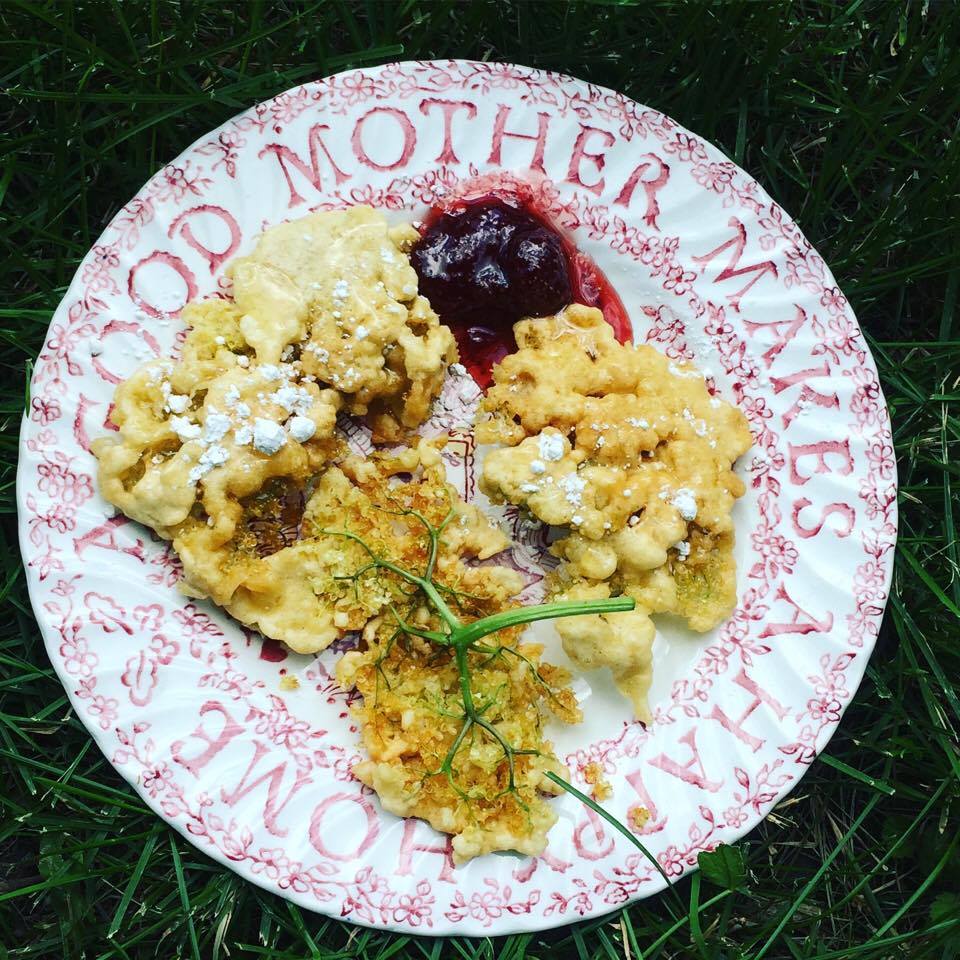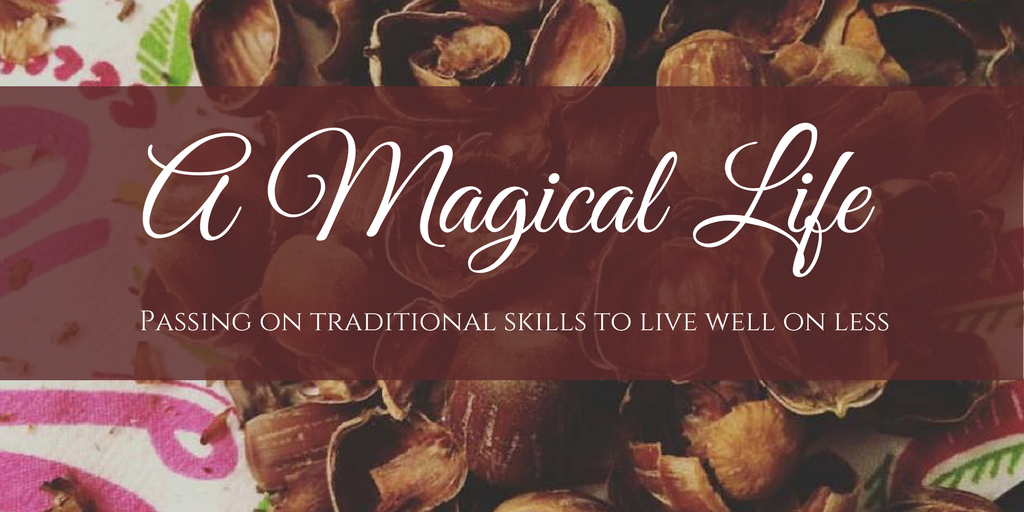Here are some frugal ways to convert to a healthy kitchen
 Reuse glass jars for storage. Glass jars are a free source of healthy food storage. Reuse those glass pasta jars for storing leftovers. Extra chopped onion can go into a reused salsa jar. Store grains in large jars from applesauce or apple cider. Ball canning jars are also great for storage, and can be purchased inexpensively at local thrift stores or even found for free through helpful relatives and Freecycle. These containers can also be heated in the microwave without leaching chemicals the way plastic storage will.
Reuse glass jars for storage. Glass jars are a free source of healthy food storage. Reuse those glass pasta jars for storing leftovers. Extra chopped onion can go into a reused salsa jar. Store grains in large jars from applesauce or apple cider. Ball canning jars are also great for storage, and can be purchased inexpensively at local thrift stores or even found for free through helpful relatives and Freecycle. These containers can also be heated in the microwave without leaching chemicals the way plastic storage will.
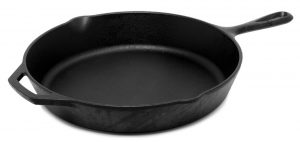 Cook with cast iron and glass. Two of the healthiest cooking products are also inexpensive and readily available. Cast iron is great for stovetop cooking (careful on glass stovetops) and glass is great for baking. Reserve those less-than-healthy pans like the nonstick frying pan for occasional cooking uses where you really need the nonstick surface (such as with omelets) and try to use the healthier options for everyday cooking. Stainless steel is also a fairly healthy and affordable choice.
Cook with cast iron and glass. Two of the healthiest cooking products are also inexpensive and readily available. Cast iron is great for stovetop cooking (careful on glass stovetops) and glass is great for baking. Reserve those less-than-healthy pans like the nonstick frying pan for occasional cooking uses where you really need the nonstick surface (such as with omelets) and try to use the healthier options for everyday cooking. Stainless steel is also a fairly healthy and affordable choice.
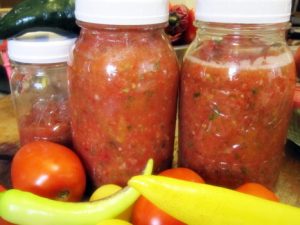 Learn one new from-scratch basic recipe a week. It can be overwhelming to switch from cooking from boxes and cans to real food cooking. Resolve to try making one homemade staple a week and you’ll quickly master loads of cooking knowledge. You’ll find lots of great tutorials for making foods like homemade tortillas, jams, breads and granola on Pinterest and you can catalog those that you find to try later. Here are my boards of subjects like all natural cooking, green living, gardening and bread making. We also have lots of recipes for our favorite family staples here on A Magical Life, such as our easy, delicious meatballs, salsa, roasted tomato sauce, applesauce, cobbler, mix and match bread, gluten free pizza crust and lots more.
Learn one new from-scratch basic recipe a week. It can be overwhelming to switch from cooking from boxes and cans to real food cooking. Resolve to try making one homemade staple a week and you’ll quickly master loads of cooking knowledge. You’ll find lots of great tutorials for making foods like homemade tortillas, jams, breads and granola on Pinterest and you can catalog those that you find to try later. Here are my boards of subjects like all natural cooking, green living, gardening and bread making. We also have lots of recipes for our favorite family staples here on A Magical Life, such as our easy, delicious meatballs, salsa, roasted tomato sauce, applesauce, cobbler, mix and match bread, gluten free pizza crust and lots more.
 Eat simply. If you’re new to living a whole foods lifestyle, don’t make it harder than it has to be. Have lots of fresh fruit out and keep cut fruit and vegetables in the refrigerator for snacking. Many simple meals are nourishing and delicious. Aim for easy dishes like baked potatoes, steamed vegetables and crockpot recipes with few ingredients. Overnight oatmeal doesn’t even require cooking!
Eat simply. If you’re new to living a whole foods lifestyle, don’t make it harder than it has to be. Have lots of fresh fruit out and keep cut fruit and vegetables in the refrigerator for snacking. Many simple meals are nourishing and delicious. Aim for easy dishes like baked potatoes, steamed vegetables and crockpot recipes with few ingredients. Overnight oatmeal doesn’t even require cooking!
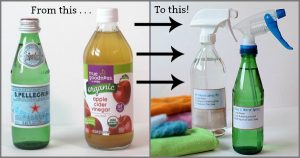 Clean with natural products. Green cleaning is incredibly cheap and easy. Use vinegar or tea tree oil and water for cleaning and disinfecting countertops and other surfaces (invest in a bottle of a great smelling essential oil to customize it to a scent you like). Baking soda and a damp sponge make great scrubs. The web is full of easy, natural recipes. You can make your own glass spray bottles by recycling glass bottles with narrow mouthed screw on lids and using the spray tops from old conventional spray cleaners.
Clean with natural products. Green cleaning is incredibly cheap and easy. Use vinegar or tea tree oil and water for cleaning and disinfecting countertops and other surfaces (invest in a bottle of a great smelling essential oil to customize it to a scent you like). Baking soda and a damp sponge make great scrubs. The web is full of easy, natural recipes. You can make your own glass spray bottles by recycling glass bottles with narrow mouthed screw on lids and using the spray tops from old conventional spray cleaners.
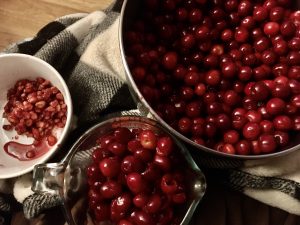 Eat seasonally and shop sales. Fresh and organic produce can be expensive, but it’s not nearly as pricey if you buy according to the season. Pay attention and you’ll soon figure out what time of the year to buy which produce and you can plan most meals accordingly. Also pay attention to what you can find locally from farmers’ markets, CSA’s, friends with gardens (or your own) and local farmers. For instance, we buy from a Brewster farm family who sells pie pumpkins at $1 apiece. Every fall, we purchase at least a dozen and make up pumpkin puree to freeze in small portions to cook with all year.
Eat seasonally and shop sales. Fresh and organic produce can be expensive, but it’s not nearly as pricey if you buy according to the season. Pay attention and you’ll soon figure out what time of the year to buy which produce and you can plan most meals accordingly. Also pay attention to what you can find locally from farmers’ markets, CSA’s, friends with gardens (or your own) and local farmers. For instance, we buy from a Brewster farm family who sells pie pumpkins at $1 apiece. Every fall, we purchase at least a dozen and make up pumpkin puree to freeze in small portions to cook with all year.
 Plan ahead. This is one of the most important aspects of real-foods cooking. It takes a little longer to make bread by hand or cook your own beans, but not actually as much as you might think. The biggest part of it is planning ahead. You can’t make last minute homemade refried beans, for instance, but if you soak them the night before and then simmer them on the stove while you’re doing other things in the afternoon (set the timer as a reminder so they don’t burn!), it does only take a couple of minutes of actual work to make a huge batch of delicious refried beans for dinner (add cumin, salt, pepper, sauteed onions and some chipotle peppers in adobe sauce at the end and mash or blend well and you may never be able to tolerate canned beans again!). Plan your meals ahead of time so you have the ingredients you need and can do the prep needed beforehand.
Plan ahead. This is one of the most important aspects of real-foods cooking. It takes a little longer to make bread by hand or cook your own beans, but not actually as much as you might think. The biggest part of it is planning ahead. You can’t make last minute homemade refried beans, for instance, but if you soak them the night before and then simmer them on the stove while you’re doing other things in the afternoon (set the timer as a reminder so they don’t burn!), it does only take a couple of minutes of actual work to make a huge batch of delicious refried beans for dinner (add cumin, salt, pepper, sauteed onions and some chipotle peppers in adobe sauce at the end and mash or blend well and you may never be able to tolerate canned beans again!). Plan your meals ahead of time so you have the ingredients you need and can do the prep needed beforehand.
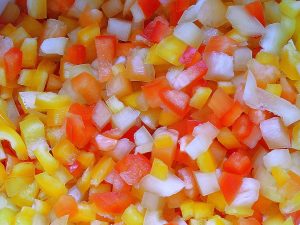 Cook and prep more than you need. If you have to chop an onion for supper and you used chopped onion a lot, then chop two and put one in a jar in the fridge for next time. If you use cooked rice several times a week, then make a double or triple batch and put aside the rest for later in the week. Things like cooked beans can be frozen for a later meal, while extra baked potatoes can go into the refrigerator for soup or stew. If you eat meat, make extra of things like ground beef and chicken breast so you have it precooked for a meal later in the week. You can often make a from-scratch meal in minutes if you have some ingredients made ahead like this. You can also use this with entire meals, once-a-month-cooking style. Simply make two of the dish and freeze one (or more) for later.
Cook and prep more than you need. If you have to chop an onion for supper and you used chopped onion a lot, then chop two and put one in a jar in the fridge for next time. If you use cooked rice several times a week, then make a double or triple batch and put aside the rest for later in the week. Things like cooked beans can be frozen for a later meal, while extra baked potatoes can go into the refrigerator for soup or stew. If you eat meat, make extra of things like ground beef and chicken breast so you have it precooked for a meal later in the week. You can often make a from-scratch meal in minutes if you have some ingredients made ahead like this. You can also use this with entire meals, once-a-month-cooking style. Simply make two of the dish and freeze one (or more) for later.
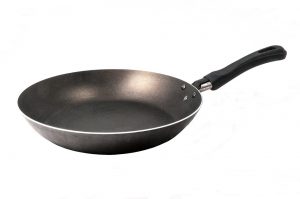 Avoid cheap products unless you’ve researched them and know they’re safe. Despite temptations, don’t buy cheap cookware and kitchen utensils at discount stores or thrift stores. A lot of imported cookware looks fine but contains unsafe levels of lead and other contaminants. Many companies boast that they’ve removed one toxic component but don’t tell you that they’ve replaced it with another that’s just as dangerous. Old pots and pans may be made of unsafe metals or contain hazardous substances, plus they can be scratched or chipped to expose foods to unsafe materials under the coating. Plastic storage containers can contain phthalates, BPA and other toxins. These products pollute your indoor air when they are heated (remember that heating nonstick pans in your home can literally kill pet birds) and contaminate the food you cooked with chemicals that have a huge negative effect on your family’s health. It’s better to have a few safe items and slowly build your inventory.
Avoid cheap products unless you’ve researched them and know they’re safe. Despite temptations, don’t buy cheap cookware and kitchen utensils at discount stores or thrift stores. A lot of imported cookware looks fine but contains unsafe levels of lead and other contaminants. Many companies boast that they’ve removed one toxic component but don’t tell you that they’ve replaced it with another that’s just as dangerous. Old pots and pans may be made of unsafe metals or contain hazardous substances, plus they can be scratched or chipped to expose foods to unsafe materials under the coating. Plastic storage containers can contain phthalates, BPA and other toxins. These products pollute your indoor air when they are heated (remember that heating nonstick pans in your home can literally kill pet birds) and contaminate the food you cooked with chemicals that have a huge negative effect on your family’s health. It’s better to have a few safe items and slowly build your inventory.
 Get project plans and ideas from books, magazines and web sites. Magazines like Mother Earth News are filled with affordable, easy plans for natural living, from how to build your own solar cooker to how to make your own beer. Order a subscription, check old issues out at the library or read it online. Also follow green cooking blogs and Facebook pages, check out natural cookbooks and so on. The library is also a great, free resource!
Get project plans and ideas from books, magazines and web sites. Magazines like Mother Earth News are filled with affordable, easy plans for natural living, from how to build your own solar cooker to how to make your own beer. Order a subscription, check old issues out at the library or read it online. Also follow green cooking blogs and Facebook pages, check out natural cookbooks and so on. The library is also a great, free resource!
 Ask for green kitchen investments as gifts. Some kitchen supplies are worth the investment but can be pricey. If there are items you think will really help make healthy cooking easier for you, such as a bread maker or great pan, ask for them for holiday and birthday presents. Some of the investments that have really paid off for us over the years are our stand mixer, our Vitamix (I recommend buying directly from Vitamix instead of Amazon as we got a reconditioned one directly from the company that saved us over a hundred dollars and it still came with a 7 year warranty that has held up amazingly with near daily use), our Instant Pot (I recommend this one that is also a yogurt maker and has the stainless steel insert), our pressure canner and our steam juicer (affiliate links to the ones we bought and recommend).
Ask for green kitchen investments as gifts. Some kitchen supplies are worth the investment but can be pricey. If there are items you think will really help make healthy cooking easier for you, such as a bread maker or great pan, ask for them for holiday and birthday presents. Some of the investments that have really paid off for us over the years are our stand mixer, our Vitamix (I recommend buying directly from Vitamix instead of Amazon as we got a reconditioned one directly from the company that saved us over a hundred dollars and it still came with a 7 year warranty that has held up amazingly with near daily use), our Instant Pot (I recommend this one that is also a yogurt maker and has the stainless steel insert), our pressure canner and our steam juicer (affiliate links to the ones we bought and recommend).
 Learn from your elders. Many of our parents, grandparents and neighbors are masters at the skills needed for a healthy kitchen. Most of our grandmothers didn’t buy jarred baby food or order pizzas for dinner when they were raising their children. You can learn how to cook, preserve foods, garden and more from loved ones who are often happy to pass on the knowledge. They are also likely to be thrilled at the company and the opportunity to share what they know.
Learn from your elders. Many of our parents, grandparents and neighbors are masters at the skills needed for a healthy kitchen. Most of our grandmothers didn’t buy jarred baby food or order pizzas for dinner when they were raising their children. You can learn how to cook, preserve foods, garden and more from loved ones who are often happy to pass on the knowledge. They are also likely to be thrilled at the company and the opportunity to share what they know.
